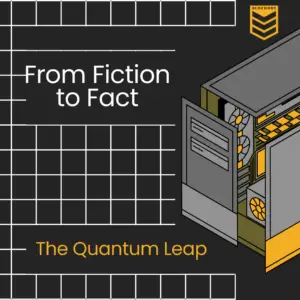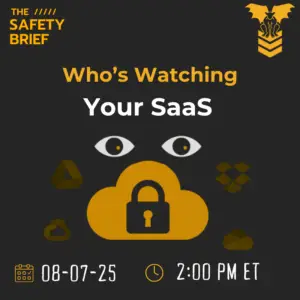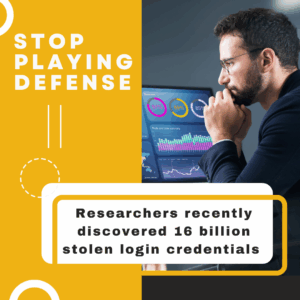Have you ever watched a sci-fi movie where the protagonists face an unstoppable technological threat and thought, “glad that’s not real”? Well, the quantum threat is no longer fiction.
Microsoft just unveiled their Majorana 1 chip – the first quantum processor using topological qubits. This isn’t just another incremental advance. This architecture could eventually scale to a million qubits, potentially solving problems that would take today’s supercomputers centuries to crack.
But Microsoft isn’t alone in this quantum race:
- NVIDIA is building a dedicated quantum research center in Boston, partnering with MIT and Harvard.
- JPMorgan Chase recently demonstrated “certified randomness” on a quantum system – a critical advancement for next-gen cryptography.
- Google, IBM, and Amazon are all investing billions in quantum development.
The Ticking Encryption Time Bomb
Here’s the security reality MSP leaders need to understand: While quantum computing promises revolutionary advances in medicine, energy, and AI, it also represents an existential threat to nearly every encryption standard protecting your clients today.
The cybersecurity community calls this looming event “Q-Day” – the day quantum computers can effortlessly break widely-used encryption methods like RSA and elliptic-curve cryptography.
This isn’t theoretical fear-mongering. It’s already happening.
Nation-state actors and sophisticated threat groups are currently executing “harvest now, decrypt later” attacks – collecting encrypted data today with the full intention of decrypting it once quantum capabilities mature.
According to recent analysis, there’s a 17-34% chance of a cryptographically relevant quantum computer emerging by 2034, and a 79% chance by 2044.
Just let that sink in. There’s a nearly 80% chance the encryption standards protecting your clients’ most sensitive data will be effectively useless within 20 years.
Staying Ahead of the Quantum Threat
As cybersecurity professionals committed to proactive defense, we’re constantly monitoring emerging threats before they impact our clients. The quantum computing threat represents exactly the kind of challenge that requires forward-thinking preparation.
Forward-thinking MSPs are already beginning to:
- Audit current cryptographic vulnerabilities across client environments
- Understand post-quantum cryptography (PQC) standards recently released by NIST
-
Develop phased migration strategies that align with timelines recommended by agencies like the UK’s National Cyber Security Centre
Critical Steps for Quantum-Readiness
For MSPs who understand the importance of staying ahead of emerging threats, these practical steps can help prepare for the quantum computing era:
- Conduct encryption inventory assessments to identify vulnerable cryptographic implementations across client systems
- Build quantum-risk education resources for clients who need to understand this emerging threat landscape
- Create a realistic migration timeline that prioritizes the most sensitive data and systems
The Quantum Reality Check
Let’s be brutally honest: the quantum revolution isn’t coming—it’s already here. The cybersecurity professionals who prepare now will be positioned as security leaders. Those who wait may find themselves scrambling to explain why they didn’t act sooner when the inevitable quantum-enabled breaches occur.
What steps is your MSP taking to prepare clients for the quantum security transition? And more importantly, are those steps enough?
As security professionals, we believe in staying informed about emerging threats and preparing proactive defense strategies. The quantum computing challenge represents an opportunity for MSPs to demonstrate true security leadership through education, planning, and methodical implementation of quantum-resistant technologies.





